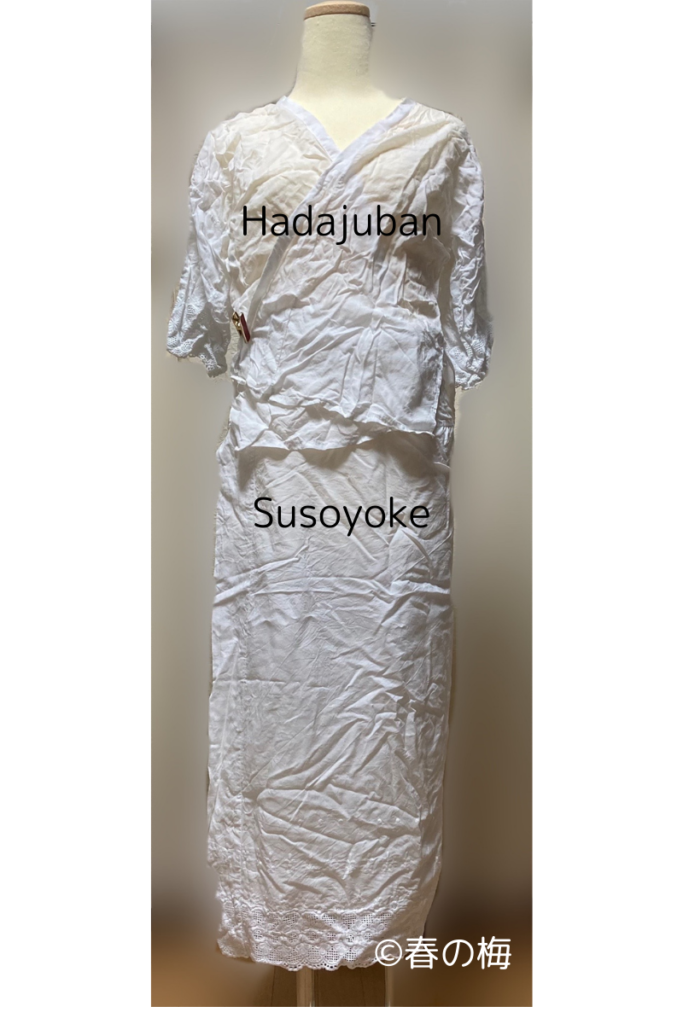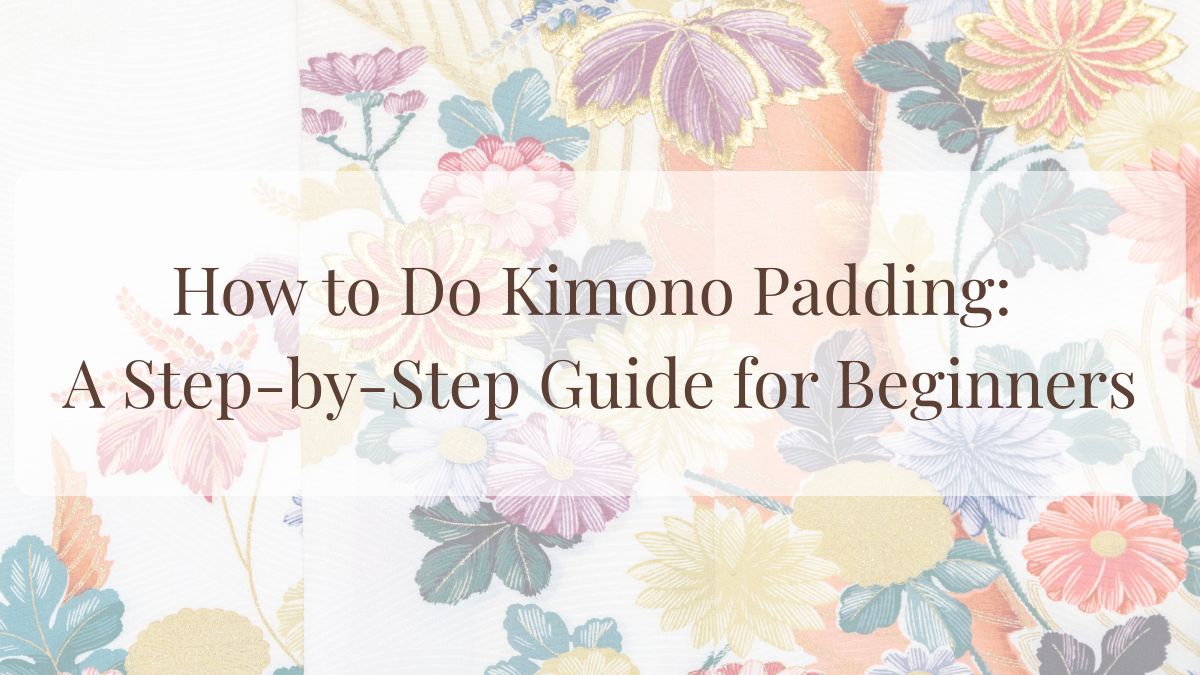In my previous article, I shared the basic concepts behind kimono padding. Today, I want to walk you through the actual process – how to create that smooth, beautiful silhouette that makes kimonos look so elegant. Don’t worry if you’re completely new to this! I’ll guide you through everything step by step.
- What You’ll Need: Essential Kimono Padding Materials
- Preparing Your Foundation: The First Critical Step
- Understanding Your Body: The Assessment Phase
- Upper Body Padding Techniques
- Waist Padding: Creating That Smooth Line
- Hip and Lower Back Padding
- Common Mistakes to Avoid
- Advanced Tip: Using Kimono Fabric as Padding
- Finding Your Perfect Padding Formula
- My Final Thoughts
What You’ll Need: Essential Kimono Padding Materials
Before we dive into the techniques, let’s talk about what materials you’ll need. The good news? You probably already have most of what you need at home.
Specialized Padding Products vs. Simple Towels
Many shops sell specialized kimono padding products, and honestly, these items are quite cleverly designed. Each product offers unique features to address specific body types and padding needs. Once you understand what kind of padding your body requires, these specialized products are definitely worth considering.
However – and this is important for beginners – I strongly recommend starting with simple hand towels from your own home. Why? Because you need to discover how much padding you actually need before investing in specialty items. Towels let you experiment freely without any financial commitment.
Choosing the Right Towels
Here’s what to gather: about five thin hand towels. Yes, thin is key! Thinner towels are much easier to adjust and layer precisely. And guess what? Those worn, old towels that you’ve been thinking about throwing away? They’re perfect for this purpose. No need to buy anything new.
The thin texture allows you to build up padding gradually, adding just the right amount where you need it without creating bulky, unnatural shapes.
Preparing Your Foundation: The First Critical Step
Before you even touch a towel, you need to put on your kimono undergarments properly. This means wearing your susoyoke (wraparound underskirt) first, with your hadajuban (kimono undershirt) layered on top. Think of these as your canvas – everything else builds upon this foundation.

Sorry for the wrinkles.
Understanding Your Body: The Assessment Phase
Now comes the detective work. Stand in front of a full-length mirror and really look at your silhouette. Where do you have curves that protrude? Where are the hollow areas? This assessment is crucial because everyone’s body is different, and your padding strategy needs to be customized to your unique shape.
I’ll share the most common padding patterns below, but remember – these are starting points, not rigid rules. You’ll need to adjust based on what you see in that mirror.
Upper Body Padding Techniques
For Those with a Larger Bust
Let’s be honest: a flatter chest line creates a better kimono silhouette. This isn’t about body shaming – it’s simply about working with how kimonos are designed. The fabric drapes more beautifully over a smooth, less pronounced chest.
In Japan, we have something called a “wasou bra” (和装ブラ) – a specialized bra designed specifically for kimono wearing that gently compresses the bust. If you can find one, it’s worth trying.
But what if you can’t access a wasou bra? Don’t worry! There’s a traditional method using sarashi (long binding cloth) to compress the chest area. When using this method, remove your regular bra first – you want the binding to work directly with your body.
Here’s a practical technique I used when dressing others professionally: take two hand towels and connect them end-to-end to create one long towel. Wrap this firmly around your chest area, pulling snugly as you wind it around. The compression from this method alone can significantly reduce bust volume. It really works!
To secure the wrapped towel, either tuck the end firmly into the layers you’ve already wrapped, or tie it in place with a koshihimo (waist cord).

For Those with a Thinner Upper Body
On the flip side, if your upper body is very thin, your collar tends to float away from your neck, creating gaps that look unfinished. The solution? Add volume with hand towels.
You have several options here. Some people place a towel on their upper torso to add thickness. Others only need a single folded towel placed at the décolletage area – that hollow spot just below your collarbone.
Feel free to combine methods! Try wrapping plus adding a décolletage pad. Experiment with different amounts and placements. There’s no single “correct” answer – only what works best for your body.

Waist Padding: Creating That Smooth Line
The waist area requires special attention because this is where most people have the most pronounced curves. Your goal is to smooth out that curve, particularly along the sides of your waist.
Here’s a pro tip: when adding waist padding, focus on the sides rather than wrapping everything around your entire abdomen. Why? Because if you wrap too much padding around your stomach, it can make you look bulky and heavy when you tie your obi (kimono belt).
Instead, position your towel so its upper edge sits around your underbust line, extending down along your ribcage. As you wrap, pull firmly to eliminate air pockets between the towel and your body. Run your hand along the towel as you wrap, pressing it smooth against your skin. This creates a seamless, natural-looking padding that won’t shift around.

Hip and Lower Back Padding
For the hip area, fold a hand towel into quarters. Place this folded towel on your lower back, positioning it so the bottom edge sits right where your buttocks begin to curve outward. Getting this placement right is crucial!
Here’s a little secret many people don’t know: you can use the excess fabric from your hadajuban as padding too. Before placing your towel, fold up any extra length from your hadajuban hem and use that as your base layer of padding. It’s an efficient way to deal with excess fabric while adding support.
Why does hip padding matter so much? Without adequate padding at the lower back, your obi will gradually slide downward throughout the day. Not only does this look sloppy, but the obi edge can also dig uncomfortably into your hip bones. Nobody wants that!


Common Mistakes to Avoid
Let me share some mistakes I’ve seen (and yes, made myself!) so you can avoid them.
Mistake #1: Letting Your Bust Rest on the Obi
When your bust sits on top of your obi, it creates all sorts of problems. The collar area becomes loose and baggy, and the whole look loses that clean, crisp line that makes kimonos beautiful. Make sure your bust compression is adequate to prevent this.
Mistake #2: Visible Padding at the Collar
This is a mistake I’ve definitely made! After you finish dressing, always do a final check in the mirror. Look carefully at your collar area from multiple angles. Can you see any towel peeking out? If so, adjust it before you leave the house. It’s such an easy fix that makes a huge difference.
Mistake #3: Misplaced Hip Padding
If you position your hip padding incorrectly, it creates a visible ridge line that shows through your kimono fabric. Not a good look! The padding should create a smooth, gradual slope from your lower back down to your buttocks. Take your time positioning this towel until it feels and looks right.
Mistake #4: Over-Padding the Abdomen
More isn’t always better! If you add too much padding around your stomach area, you’ll end up looking stocky and heavy rather than elegant. Remember the key principle: add padding only where you have hollows, not everywhere. You’re filling gaps, not building up your entire torso.
Advanced Tip: Using Kimono Fabric as Padding
Here’s something you might not have considered: sometimes you can use the kimono itself as part of your padding strategy.
Let’s say you’re wearing a kimono that’s too large for you. This creates extra fabric at the ohashori (the fold at your waist). Instead of just letting that fabric bunch up, you can fold it strategically to serve as additional padding. Pretty clever, right?
When you plan to use this technique, adjust your towel padding accordingly. If you know you’ll have extra fabric to work with, you don’t need to add as many towels. It’s all about achieving the right total volume through whatever combination of materials works best.
Finding Your Perfect Padding Formula
Here’s the truth about kimono padding: it’s incredibly personal. What works perfectly for your friend might not work for you at all. Body types vary enormously, and that’s completely normal and okay.
I encourage you to approach this as an experiment. Try different amounts of padding in different areas. Take photos so you can compare different approaches. Wear the padding around your house for a while to see how it feels and how well it stays in place.
Some days you might need more padding, other days less – even your own needs can vary depending on the kimono you’re wearing, the formality of the occasion, and even how your body feels that particular day.
The process of discovering your ideal padding setup is actually part of the fun of learning to wear kimono. Each time you dress, you’ll learn something new about what works for your body.
My Final Thoughts
Kimono padding might seem complicated at first, but like any skill, it becomes easier with practice. Start simple, be patient with yourself, and don’t be afraid to experiment.
Remember that even professional kimono dressers had to learn these techniques one step at a time. Nobody was born knowing exactly how many towels to fold or precisely where to place them. It’s a journey of discovery, and every body is different.
I hope this guide gives you the confidence to try padding for yourself. Even if your first attempt isn’t perfect, you’re learning valuable skills that connect you to centuries of Japanese tradition. How wonderful is that?
If this article helped you in any way, I’d be absolutely delighted. And remember – the most important thing isn’t achieving some idealized perfection, but finding what makes you feel comfortable and confident in your kimono. That’s when you’ll truly look your best.
There are other articles related to kimono padding as well, so I’d be happy if you take a look at them for reference.



コメント